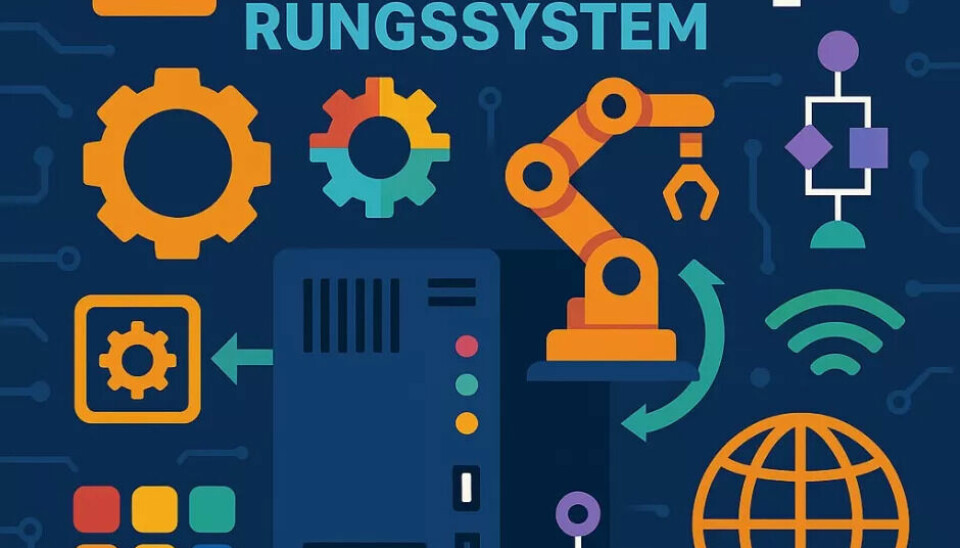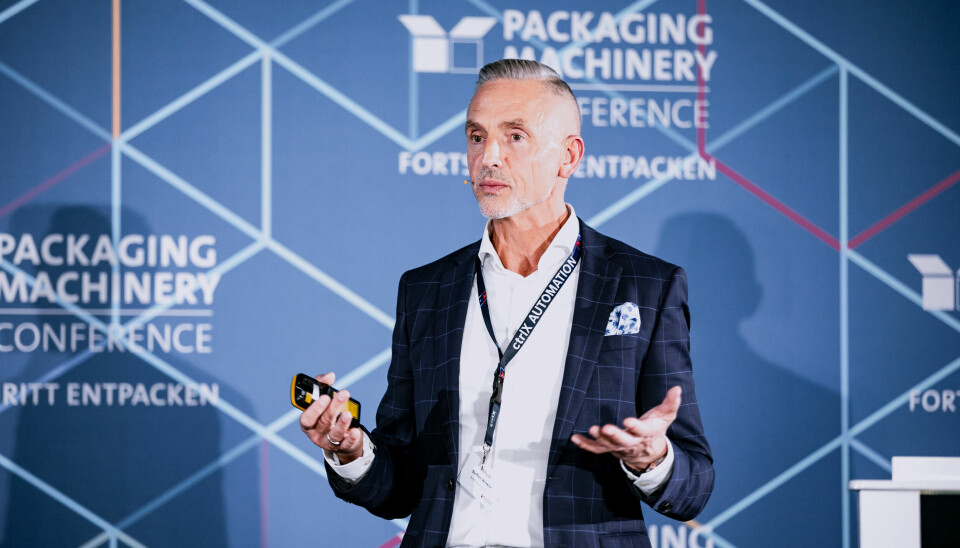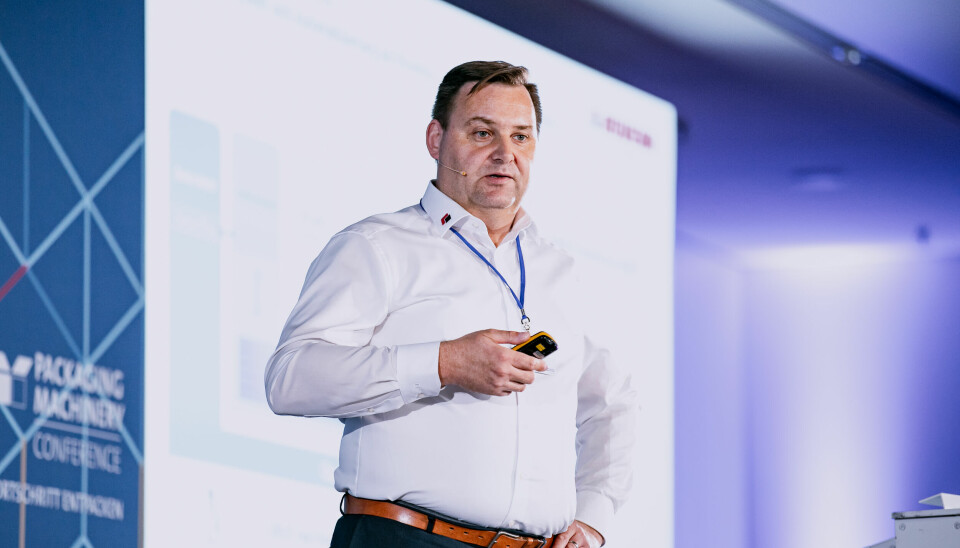Automation in mechanical engineering
Open platforms strengthen mechanical engineering

How can mechanical engineering be future-proofed? At the Packaging Machinery Conference 2025, Steffen Winkler, CSO Business Unit Automation at Bosch Rexroth, and Ingo Hamel, CTO Rovema, provided exciting insights: They demonstrated how automation and modern control architectures help companies respond flexibly, efficiently, and sustainably to changes.
Automation technology is one of the last bastions of German technological leadership. Nevertheless, the pressure from Asia, geopolitical tensions, and regulatory requirements has increased significantly. Bosch Rexroth demonstrates how companies can future-proof themselves under these conditions with its open automation system "Ctrlx Automation." In his presentation, Steffen Winkler, CSO Business Unit Automation of the company from Lohr am Main, outlined five key levers that make up a future-proof automation strategy.

An open operating system for everyone
The heart of the Ctrlx platform is the "Ctrlx OS" operating system, which is based on real-time Linux and can be operated on various devices - including third-party hardware. The architecture is microservice-based, browser-capable, and web-based programmable. Developers can use almost any programming language supported by Linux, from Python to C++. This aligns the system with the expectations of younger generations of developers who want to work with modern development environments and tools like Github and Copilot. The apps run isolated in sandboxes and are certified by Bosch Rexroth for performance and IT security. Already, about half of the over 80 apps in the Ctrlx store come from third-party providers, with the trend rising.
IT security as an integral component
Industrial systems are increasingly targeted by cyberattacks. Bosch Rexroth therefore pursues a "secure-by-design" approach: The operating system was newly developed from the ground up with a focus on security. Security updates can be centrally managed and rolled out across thousands of devices. The platform already meets IEC 62443 Level 2, with Level 3 in preparation. Partners like Txone support the development of intrusion detection systems. Particular attention is paid to the EU-wide Cyber Resilience Act, which requires manufacturers to systematically identify security risks, provide updates, and quickly address vulnerabilities. The example of Bosch Rexroth shows how continuous security processes can be implemented from development to field operation.
A complete automation toolkit
Ctrlx Automation is more than just a control system - it includes a complete portfolio of hardware, software, drives, interfaces, and motion control functionalities. The modularity allows for high adaptability. This enables even demanding applications such as transport solutions in packaging technology or mobile robots to be quickly realized with pre-integrated solution packages. Through so-called solution sets, pre-configured combinations of hardware, software, and engineering templates, applications like flow pack machines or autonomous transport systems can be put into operation with minimal effort.
An ecosystem instead of isolated solutions
The core of the Ctrlx approach is the consistent openness to third-party providers. Over 100 companies are now participating in the partner network "Ctrlx World" with their own hardware and software solutions. Integration is seamless, whether through standardized interfaces, APIs, or via the Ctrlx Data Layer.
The goal is a plug-and-play principle similar to Apple Homekit or USB: Sensors, actuators, and software components from different manufacturers can be easily integrated and configured using standardized tools. The big advantage for users: an expandable platform with real added value through interoperability.
Long-term availability for sustainable investments
Durability is an essential criterion for investments in mechanical engineering. Bosch Rexroth guarantees a minimum availability of its components for over 25 years - consisting of ten to 15 years of active sales phase and at least ten years of spare parts supply. This period can even be extended upon request. The sustainability aspect is obvious: those who can use their systems for a long time save resources and reduce the CO₂ footprint.
With Ctrlx Automation, Bosch Rexroth provides a platform that addresses central challenges of Industry 4.0: openness, IT security, software-centricity, flexibility, and sustainability. This not only contributes to strengthening Europe's position in automation technology but also defines new standards for the future viability of mechanical engineering.
Rovema CTO Ingo Hamel spoke about the company's control system transition and explained why the choice fell on Ctrlx. (Image: Packaging Machinery Conference)
Rovema and Ctrlx: a practical report on the control system transition
What this can look like in practice was impressively demonstrated by Ingo Hamel, CTO at machine builder Rovema, in the subsequent presentation. In packaging machine construction, longevity is not the exception but the rule, according to Hamel. Many systems run reliably in operation for over 20 years. For Rovema, this means that control and automation concepts must not only be technically up-to-date but also maintainable and updatable in the long term. Against this background, the company has replaced its in-house control system "Paccontrol" with a new system: Ctrlx from Bosch Rexroth.
Rovema has been active in the market for over 65 years and today delivers vertical form-fill-seal and end-of-line packaging machines worldwide. With around 900 employees and over 30,000 machines delivered - of which around 7,500 are actively in service - Rovema is one of the established players in the segment. In addition to its headquarters in Fernwald, the company operates locations in the USA, India, and the Netherlands.

Control as a differentiating feature
A key unique selling point has been its own control platform "Paccontrol." This has been based on industrial PCs since 1996 and on Linux since 2009. Complemented by specially developed HMI and motion components, the platform offered a high degree of adaptability. However, new requirements for scalability, cybersecurity, interface openness, and future viability made a fundamental technology change necessary.
Ctrlx: Why Rovema switched
With Ctrlx Automation from Bosch Rexroth, Rovema chose a system based on open, industrial standards while integrating existing know-how. Key points of the decision were:
- Scalability: From the compact hardware variant "Ctrlx Core" to the pure operating system solution "Ctrlx OS," the system covers a wide range of machine classes.
- Openness: The Linux-based platform with app structure allows the integration of own tools and external applications.
- Security: Ctrlx meets the requirements of the Cyber Resilience Act and supports a differentiated update strategy.
- Legacy support: By enabling the integration of existing motion and HMI components, a gradual retrofit in the field is possible - a clear advantage for customers with legacy systems.
Future-proof thanks to backward compatibility
A crucial aspect of the transition was ensuring investment security for existing customers. Already installed converters with multi-protocol capability can be switched to the new Ethercat bus via software. The control cabinet is merely supplemented with the new "Ctrlx Core" industrial PC and expanded with suitable couplers - without deep interventions in the machine hardware.
An example from practice: A key customer with increased security needs due to regulatory requirements (keyword NIS 2) receives a system with current control today - and the contractually guaranteed right to an update to Ctrlx in 2027. This upgrade capability over decades is lived investment security.
Challenges in update management
However, with increasing system openness, the requirements for firmware and app management also increase. Security updates must be evaluated, distributed, and documented. This is a task that will increasingly challenge not only machine builders but also their customers in the future. Smaller operators with limited IT staff, in particular, rely on understandable, reliable update and patch concepts.
Ctrlx offers advantages here through app logic, remote update capability, and version management. Nevertheless, evaluating which version is used when and in which combination remains a challenging task.
Business potential through lifecycle orientation
Rovema already generates 45% of its revenue in the area of lifecycle services, with a rising trend. The ability to bring existing machines up to date with reasonable effort is not only a service promise but also a differentiating business model. Rovema is currently in the implementation phase with its first pilot customers.
With the introduction of Ctrlx, Rovema remains true to its philosophy: technically leading, customer-oriented, and long-term plannable. The system combines openness with stability, integration with security - and thus provides an answer to the growing demands in machine and packaging plant construction.